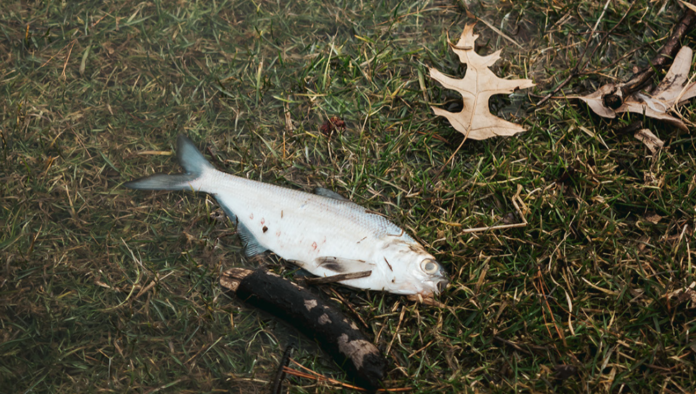
WINONA LAKE – Residents on Pike Lake reported dead fish washing up on their shores on Sunday, March 5.
Upon further inspection by Lilly Center staff, approximately 50 dead fish could be seen from the properties west of Beyer Park to the stretch of the bank along Arthur Street, south of the Pike Lake pier. Additional reports suggest fish have been found along the shores of Little Pike Lake, too.
As of Monday afternoon, the fish kill appears to be contained to gizzard shad, a species
of fish particularly prone to fish kills.
Lack of oxygen in the water is one of the primary causes of a fish kill.
During the winter months, fish enter a state called torpor that reduces their oxygen use. However, as plants decompose the oxygen is used up. Another cause of low oxygen is ice cover.
The ice creates a seal that does not allow oxygen from the air to mix into the water.
When a fish kill is made up of one species of fish, a virus or illness may be to blame.
According to Jeremy Price, associate director at the Lilly Center and a fish biologist,
gizzard shad are “very susceptible to stress-related illnesses brought on by water
temperature changes during the spring.
These illnesses often result in the death of a small portion of the population.”
A gizzard shad fish kill was previously reported in Pike Lake in 2019.
Price explains that although gizzard shad may be weak individually, their ability to
reproduce at a young age makes their populations resilient to fish kills.
As a result, it is unlikely that this die-off will have a significant impact on Pike Lake.
Do you have additional information about this event or have related questions about
your lake? Contact the Lilly Center by calling 574-372-5100, ext. 6446, or by emailing
lakes@grace.edu.




